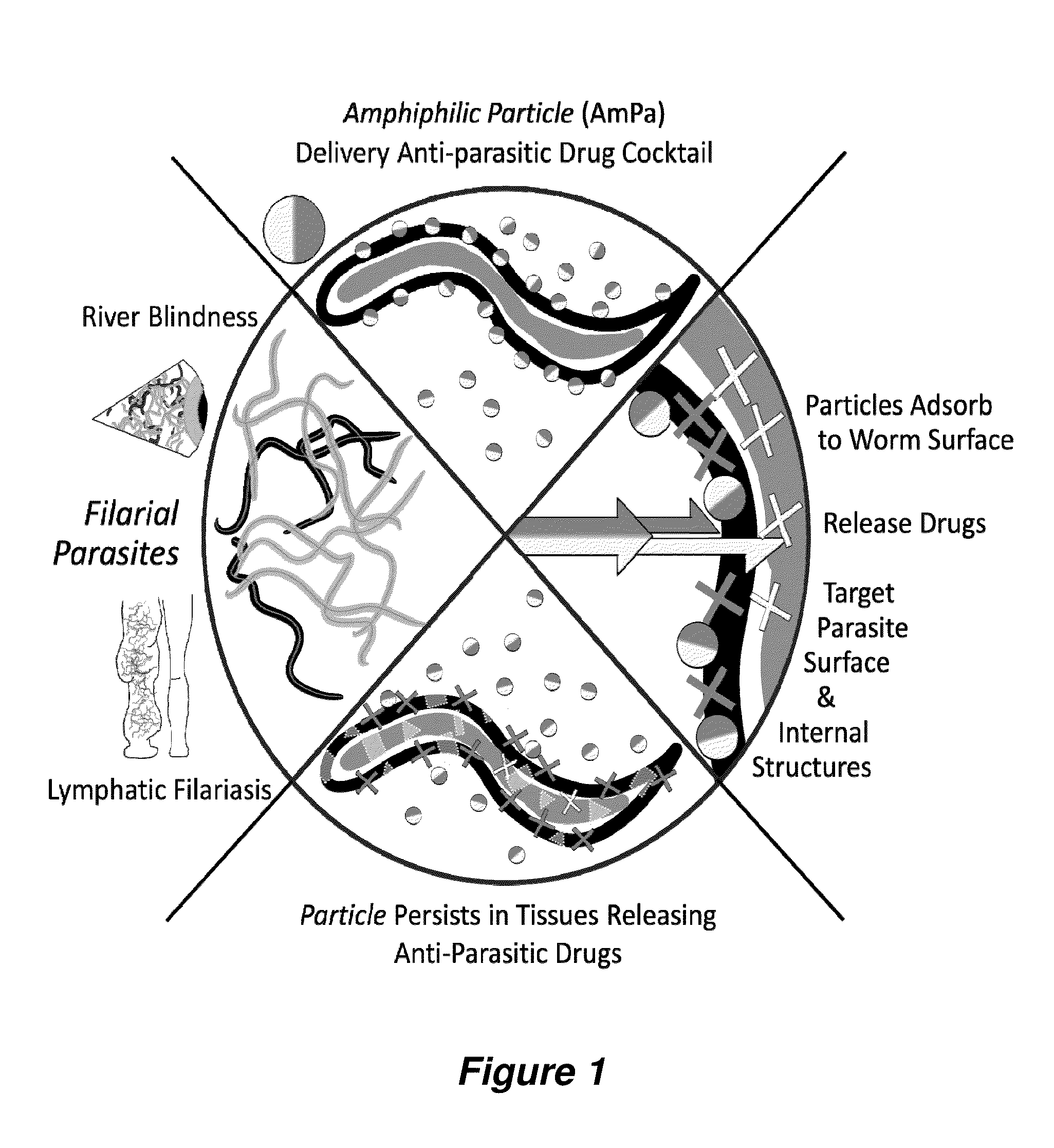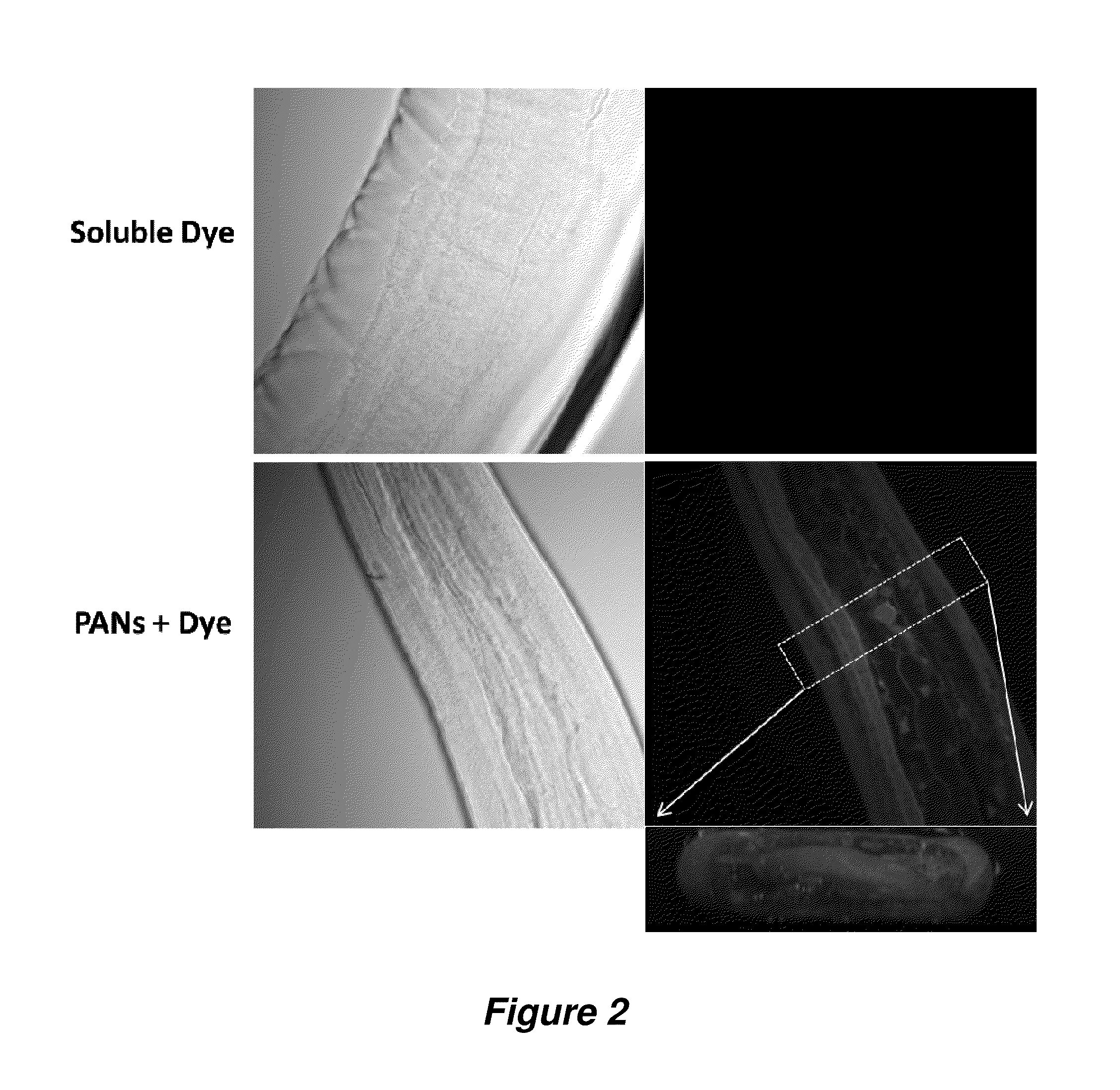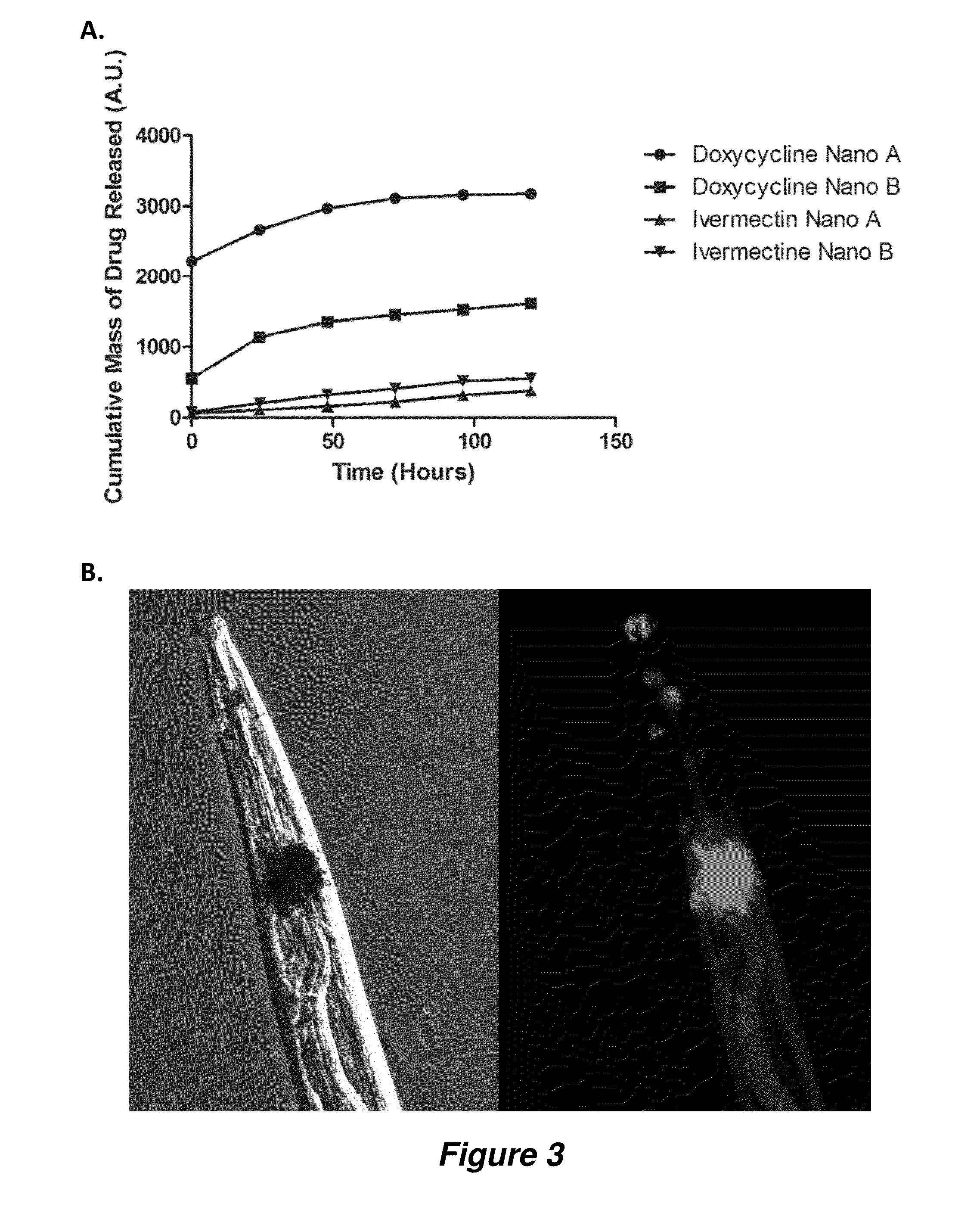Antiparasitic polyanhydride nanoparticles
a polyanhydride nanoparticle and antiparasitic technology, applied in the direction of animal repellents, biocide, dispersion delivery, etc., can solve the problems of increasing mortality in the adult population, affecting the survival rate of the adult population, and the life cycle of the nematode being interrupted by the administration of the pans, so as to reduce the load of microfilaria, increase the effect of drug and parasite interaction, and interrupt the life cycle of the nemato
- Summary
- Abstract
- Description
- Claims
- Application Information
AI Technical Summary
Benefits of technology
Problems solved by technology
Method used
Image
Examples
example 1
Preparation of Polyanhydride Nanospheres and Microspheres
[0132]Sebacic acid (99%), 4-hydroxybenzoic acid, 1-methyl-2-pyrrolidinone anhydrous (99.5%), 1,6-dibromohexane (98.5%) and fluorescein-isothiocyanate-dextran (FITC-dextran) were purchased from Sigma-Aldrich (Milwaukee, Wis., USA). Other chemicals were purchased from Fisher Scientific (Pittsburgh, Pa., USA) and used as received.
[0133]Synthesis of SA and CPH pre-polymers and copolymers was performed as previously described (M. J. Kipper et al., Biomaterials. 23(22):4405-4412 (2002); E. Shen et al., J. Control. Release. 82(1):115-125 (2002); A. Conix, Poly[1,3-bis(p-carboxyphenoxy)propane anhydride], Macromolecular Synthesis, 2:95-98 (1966); and U.S. Pat. No. 7,659,322 (Vogel et al.); each incorporated herein by reference).
[0134]The resulting polymers were characterized using 1H nuclear magnetic resonance to verify polymer chemistry, gel permeation chromatography to analyze molecular weight, and differential scanning calorimetry ...
example 2
Polyanhydride Nanoparticle Delivery Platform Enables Enhanced Killing of Filarial Worms
[0140]Within the last decade there has become an increasing concern regarding the ability to effectively control and eradicate current infections of the filarial endoparasite B. malayi, B. pahangi, and its symbiotic bacteria Wolbachia. Filarial diseases represent a significant social and economic burden in areas that are endemic with lymphatic filariasis (LF) and river blindness (RB). This example demonstrates the use of an amphiphilic polyanhydride (AmPa) nanoparticle-based platform for the co-delivery of doxycycline to the symbiotic bacteria, Wolbachia, and the antiparasitic, ivermectin, to target the adult worm.
[0141]Co-encapsulation within AmPa nanoparticles increased drug efficiency in killing adult male and female B. malayi worms by 40-fold and reduced microfilaria shedding by females over 4 fold. Time to death of the macrofilaria was also significantly reduced in AmPa+IVM / Doxy treated group...
example 3
Amphiphilic Polyanhydride Nanoparticles Enable Increased Killing of Brugia malayi and Brugia pahangi
[0182]Amphiphilic polyanhydride nanoparticles (PANs) are solid, surface eroding particles, that encapsulate cargo such as small molecules or proteins, which cargo becomes an integral component of the particles. This next generation platform can be used as a multiple-drug delivery system with the ability to increase the efficacy of a drug and its interaction with parasites. Amphiphilic polyanhydride nanoparticles (PANs) having a variety of chemistries (e.g., 20:80 CPH:SA; 20:80 CPTEG:CPH; and 50:50 CPTEG:CPH) can be prepared with a combination of antiparasitic agents and antibiotic agents to provide a lethal delivery vehicle for the parasites that cause parasitic infections. PANs loaded with an antiparasitic and an antibiotic were found to provide enhance killing of B. malayi and B. pahangi compared to a combination of the corresponding soluble drugs.
[0183]We sought to use these prope...
PUM
| Property | Measurement | Unit |
|---|---|---|
| diameter | aaaaa | aaaaa |
| diameter | aaaaa | aaaaa |
| diameter | aaaaa | aaaaa |
Abstract
Description
Claims
Application Information
 Login to View More
Login to View More - R&D
- Intellectual Property
- Life Sciences
- Materials
- Tech Scout
- Unparalleled Data Quality
- Higher Quality Content
- 60% Fewer Hallucinations
Browse by: Latest US Patents, China's latest patents, Technical Efficacy Thesaurus, Application Domain, Technology Topic, Popular Technical Reports.
© 2025 PatSnap. All rights reserved.Legal|Privacy policy|Modern Slavery Act Transparency Statement|Sitemap|About US| Contact US: help@patsnap.com



